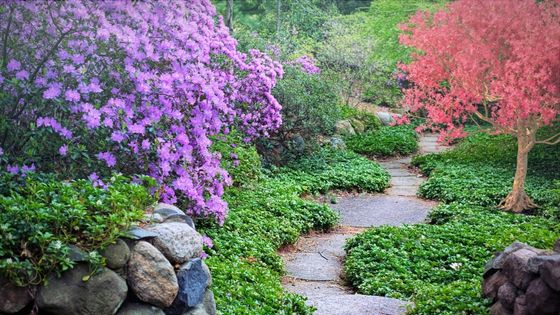Many people take pride in their gardens, but sadly, a lot of the wildlife that grows and visits naturally continues to struggle due to the abundance of hard surfacing, such as patios and decking, overly mowed lawns, and pavements. Creating a garden that is more wildlife friendly doesn’t have to mean letting it grow completely wild. There are small things you can do that make a big difference to insects and birds whilst looking beautiful for you.

Did you know that around 87% of households in the UK have a garden? That is a lot of green space. In fact, according to The Wildlife Trusts, the UK’s gardens cover a bigger area than all the nature reserves combined. In terms of wildlife, making them feel welcome is crucial for their survival, especially as the cold winter creeps in.
Let the Wild In
If you can, let your grass grow a bit. A lot of people prefer fake grass or manicured lawns, but this can be to the detriment of wildlife. You can make a big difference by creating habits by leaving some parts unmown, whilst having areas with shorter grass to help birds, such as robins, feed easily on worms.
Grow Insect-Friendly Plants
Flowers make your garden look beautiful and smell nice, but they’re also important for insects. Choosing to plant nectar-rich plants, such as lavender, will attract insects, such as bees and butterflies, which means you can enjoy the fluttering of butterflies too. If you haven’t already, consider flowers which release their scent in the evening, such as honeysuckle and common jasmine, as they will attract moths into your garden.
If you have the chance to landscape your garden, then you could plan to have plants which flower throughout the year to ensure there is plenty of food for wildlife throughout all the seasons. Talk to landscaping experts to see how you can transform your outdoor space. Garden designers can provide you with all the tools you need from companies, such as arbourlandscapesolutions.co.uk, meaning your wildlife haven will be blooming in no time.
Give a Helping Hand
Create a wildlife sanctuary in your garden by providing bird food, bird boxes, bat boxes, and hedgehog homes. You can buy these at most garden centers, but it can be a great project to try making your own. Making insect hotels can be a great outdoor project to do with young children whilst educating them on the importance of insects for the wider ecosystem.
Whilst bats can seem scary, they’re an important part of British wildlife. You can get them (and birds) by reducing or removing artificial lighting in your garden which can impact them due to light pollution.
Provide Water
Wildlife needs water too. A pond is a wonderful way to bring life to your garden and help nature. Ponds benefit water-loving insects, birds that prey on amphibians, like frogs, and small mammals that require a drink. They can also make your garden more interesting by adding fish. If a pond isn’t an option, you could provide a bird bath. This offers drinking water for garden birds and other wildlife and allows birds to bathe their feathers. Make sure you keep the water topped up and fresh.
